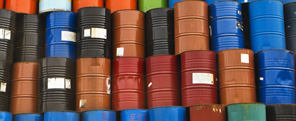 |
|||||||
|
The answer is, 'absolutely.' Let's consider a manufacturing company that just opened its doors. The company purchased used machinery to manufacture its products. Let's say the company's machinery uses conventional oil. The company purchases lubricants based on equipment manufacturers' recommendations and keeps these lubricants in stock as needed and for regular maintenance. Time passes and the company expands to meet growing demand. It buys more machinery, perhaps even new equipment, to increase its output, but the newer machinery has different oil specifications, such as synthetic lubricants. The company then finds itself stocking different lubricants to maintain its stable of machines. The company's growth is admirable, but along with it comes the need to stock more lubricants, and lube inventory costs rise. Along with that comes the increased potential for error in using an incorrect lubricant. So imagine a huge plant with scores of different machines, all of which have to be lubricated and maintained, and suddenly there is a need for a comprehensive program to track all of the different lubricants required to keep the equipment running. At some point, management leans on the purchasing department to track lubricant consumption and identify a way to lower lube costs and consolidate the number of lubricants required in inventory. Time for a Lubrication Audit How and Why to Categorize The criteria used in determining which lubricants work on which machines should always be driven by the desired performance of the machine. For instance, two similar machines from different manufacturers may specify a low-viscosity lubricant that enhances energy efficiency, and a high-viscosity lubricant that resists contamination. Both work effectively, but yield a different result in service. These are the nuances where a lubrication expert can be a real help in optimizing a company's lubrication program. For companies who have a lubrication expert on staff, Acculube's team of trained specialists speaks their language and can help keep a world-class lubrication program on track. For those that don't, let Acculube help with a program to streamline your lubrication program, and improve the efficiency of your operation.
|
|
||||||
|
|||||||
|
|||||||
Accurate Lubricants & Metalworking Fluids, Inc.• 403 Homestead Avenue; Dayton, Ohio 45417 USA • Phone: 937-461-9906 Fax: 937-461-9917
|
|||||||

